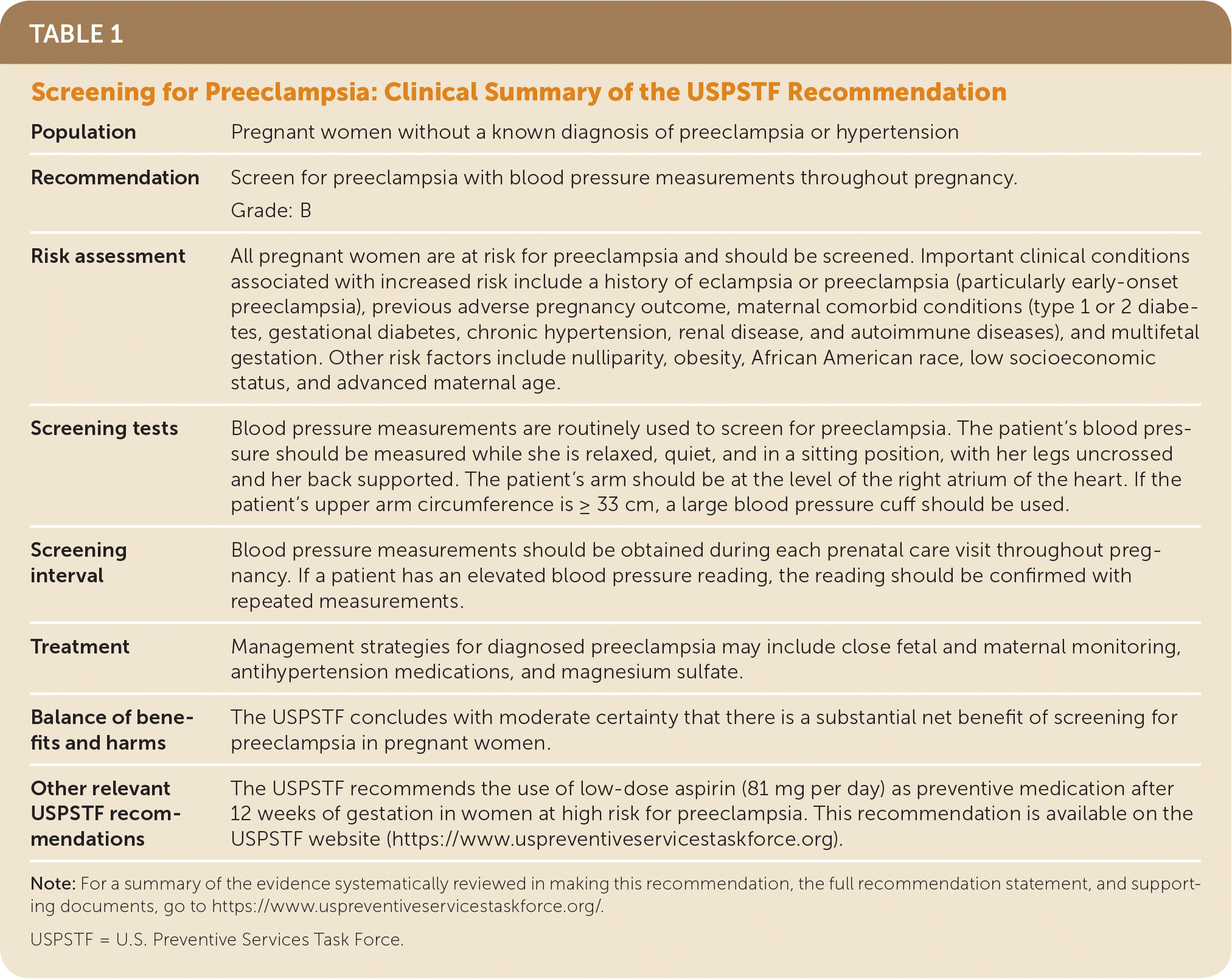
| Population | Pregnant women without a known diagnosis of preeclampsia or hypertension |
| Recommendation | Screen for preeclampsia with blood pressure measurements throughout pregnancy. Grade: B |
| Risk assessment | All pregnant women are at risk for preeclampsia and should be screened. Important clinical conditions associated with increased risk include a history of eclampsia or preeclampsia (particularly early-onset preeclampsia), previous adverse pregnancy outcome, maternal comorbid conditions (type 1 or 2 diabetes, gestational diabetes, chronic hypertension, renal disease, and autoimmune diseases), and multifetal gestation. Other risk factors include nulliparity, obesity, African American race, low socioeconomic status, and advanced maternal age. |
| Screening tests | Blood pressure measurements are routinely used to screen for preeclampsia. The patient's blood pressure should be measured while she is relaxed, quiet, and in a sitting position, with her legs uncrossed and her back supported. The patient's arm should be at the level of the right atrium of the heart. If the patient's upper arm circumference is = 33 cm, a large blood pressure cuff should be used. |
| Screening interval | Blood pressure measurements should be obtained during each prenatal care visit throughout pregnancy. If a patient has an elevated blood pressure reading, the reading should be confirmed with repeated measurements. |
| Treatment | Management strategies for diagnosed preeclampsia may include close fetal and maternal monitoring, antihypertension medications, and magnesium sulfate. |
| Balance of benefits and harms | The USPSTF concludes with moderate certainty that there is a substantial net benefit of screening for preeclampsia in pregnant women. |
| Other relevant USPSTF recommendations | The USPSTF recommends the use of low-dose aspirin (81 mg per day) as preventive medication after 12 weeks of gestation in women at high risk for preeclampsia. This recommendation is available on the USPSTF website (https://www.uspreventiveservicestaskforce.org). |